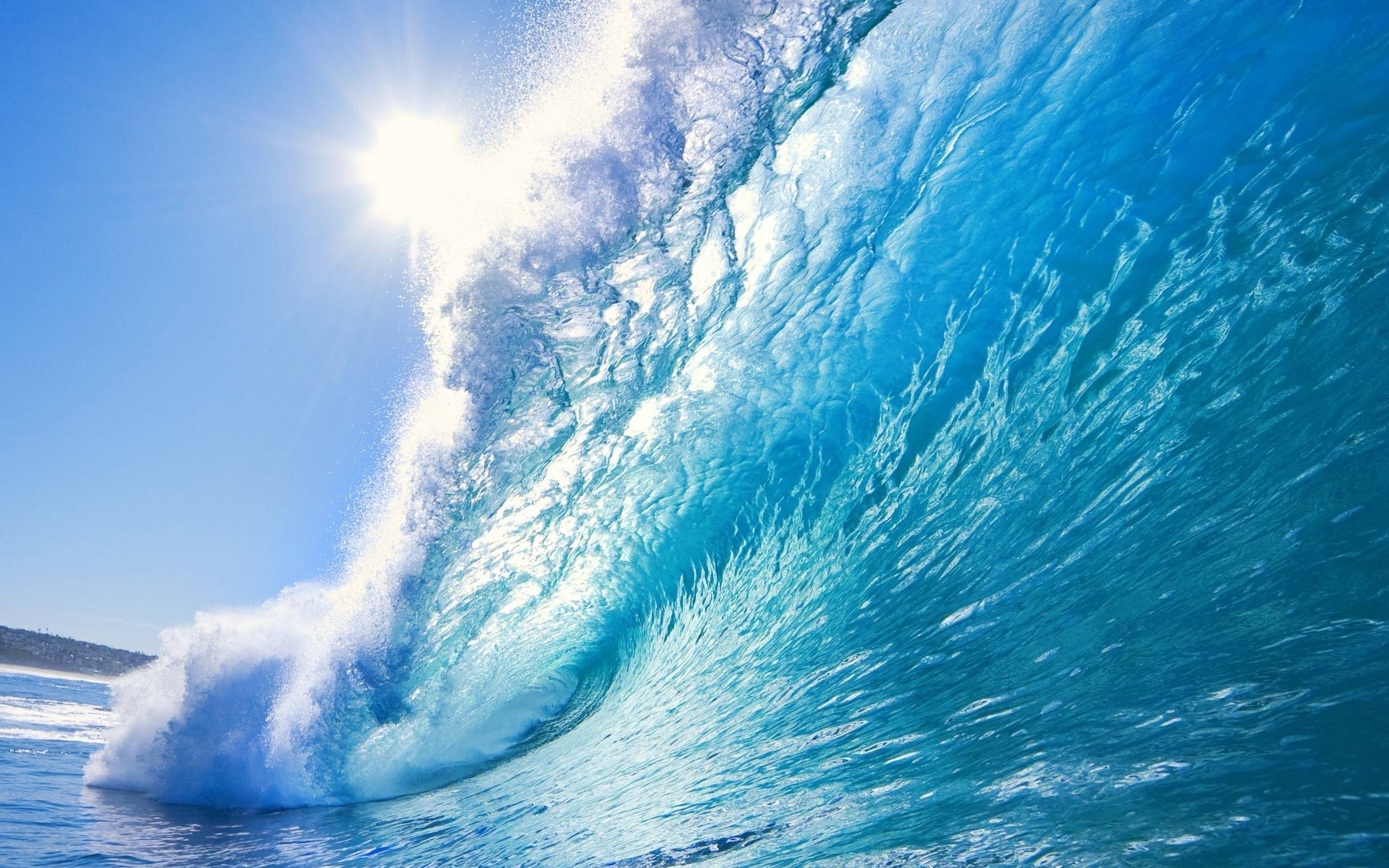We know more about space than we do about the ocean. That is about to change
Four Seasons Magazine, January 2013
On March 26 last year, about 320 kilometres southwest of Guam in the western Pacific, James Cameron, filmmaker, entrepreneur and now deep-sea diver, squeezed into the pilot sphere of the Deepsea Challenger—a US$8 million one-person submersible he and his team secretly designed and built in Australia—to begin a journey that would take him to the deepest point on Earth.
It was a tight fit. The Challenger’s cockpit is barely a metre in diameter, and much of that is filled with instrumentation and life-support systems. But what it lacks in space, the craft makes up for in technology. Built around a buoyant core of syntactic foam—a material both lighter than water and able to withstand the enormous pressure of the ocean’s depths— the Deepsea Challenger cuts vertically through the water like a submarine on its end, using jettisonable steel plates as ballast. On board, a bank of 1,000 lithium-ion batteries power more than 180 self-regulating electrical systems, from scrubbers to remove carbon dioxide from the cockpit to a submarine version of cruise control. Twelve thrusters allow the pilot to manoeuvre along the bottom of the sea. And with a 2-metre-long bank of ultra-bright LEDs and three HD cameras fixed to the outside of the craft, its missions can, suitably enough for the creator of Avatar, be filmed in 3-D.
It took Cameron two hours and 37 minutes of carefully managed descent to reach the Challenger Deep, the deepest part of the Mariana Trench, 10,898 metres (35,745 feet) below the surface. He then spent almost two hours on the seabed, filming and collecting samples, and ascended to the surface in just 70 minutes. (The only other humans to have reached that depth— Don Walsh and Jacques Piccard, in 1960—took nearly five hours to descend and were able to spend only 20 minutes on the ocean floor.) The mission has yielded some scientific results, including insight into the metabolism of a specific type of bacterium. Perhaps more significantly, it marks a new wave of ocean exploration led not by governments but by individuals brave—and rich—enough to venture into one of the most hostile environments on Earth. Besides Cameron, Richard Branson’s Virgin Oceanic is developing a one-person sub to visit the ocean floor, and Google is partnering with Catlin Seaview Survey, another private enter- prise, to bring Street View to the depths.
For almost all of history, humans have explored the ocean. We have followed its cur- rents to discover new markets and peoples to conquer. We have used it to forge trading alliances across thousands of miles. And we have fed ourselves from what, until recently, has seemed like an inexhaustible stock of fish. But, even now, we know almost nothing of life below the surface. Venture more than 50 metres (130 feet) down—about the maximum realistic depth for a diver—and you enter a zone we know less about than the surface of Mars.
“In the past 50 years,” says Sylvia Earle, a veteran ocean explorer who now runs DOER Marine, a deep-sea exploration company in California, “we have explored about 50 metres below the surface. But the average depth of the ocean is 4,000 metres, and the rest is virtually unknown. This is our next frontier.”
Earle, now 77 and still women’s record holder for the deepest solo dive in a submersible, says the ocean for us is like Africa for the European explorers of the 19th century. “There is so much to discover,” she says. “Climbers on land, for example, say that there are no mountain peaks left to climb. I say, ‘Come on.’ In the ocean there are undersea mountains, thousands of them, giants of more than 10,000 feet [3,048 metres], and most have never been seen, let alone climbed. Yes, you have to start from the top and go down, but they are there waiting to be explored.”
Branson agrees. “It is incredible how little we still know about the ocean,” he says, “considering all of the advances in technology in the past few decades. Now ocean explorers have the tools and know-how to make fascinating new discoveries. In the same way as the likes of Shackleton and Livingstone conquered uncharted territory, the ocean explorers of today are venturing into the unknown. What could be more exciting than that?”
The ocean, however, is far less hospitable to humans than even the remotest African jungle. Descend through its depths, and first light and then heat rapidly disappear. Below 1,000 metres, the sea is pitch black and the temperature drops to 4 ?C (39 ?F). By the time you reach the hadal trenches, the deepest zones of the ocean floor, the water is barely above zero. And then there is the pressure. Water pressure increases by one atmosphere (1 kg per square inch) every 10 metres below the surface. Exploring the average depth of the ocean means withstanding pressures of 400 atmospheres, or 5,800 psi. The spherical pilot pod of the Deepsea Challenger has to resist pressures of 16,000 psi, or 1,100 atmospheres. As Cameron puts it, outlining the mission’s risks on the project’s web site, “If you’ve miscalculated the design, as you approach the bottom, with barely a warning groan, the sphere buckles suddenly. Faster than you can scream, you’re smashed into jam.”
Remotely operated vehicles (ROVs), such as the Nereus submersible, operated by the (again private) Woods Hole Oceanographic Institution and capable of dives to a depth of 11,000 metres, minimise the risk and have yielded many scientific discoveries, but for Earle, nothing beats going down there yourself. “Looking at the deep ocean with human intelligence, imagination and curiosity makes all the difference,” she says. “It’s great to sit on a boat with a cup of coffee looking at a TV screen. But we need the brains of humans wherever we go to give perspective and added zest. When you are there yourself on the bottom and a shadow appears, you feel something, your senses are heightened. Looking at a picture of a puppy isn’t the same as having one look you in the eye.”
And, she says, there is plenty to discover. “When you explore the deep sea, you are surprised, shocked, by the magnitude of what you don’t know. No manned submarine has ever been to the Antarctic, but an ROV went under the ice in the 1980s and gave us a glimpse of the enormous diversity of life there, like a Serengeti of the sea. And in Hawaii, a colleague of mine, who dives between 300 feet and 500 feet [91 and 152 metres], sees 12 to 13 new species of fish every hour.”
Indeed, according to Paul Rose, vice president of the U.K.’s Royal Geographical Society and a long-time polar and ocean explorer, it is the abundance of life in the ocean—and our relationship with it—that makes deep-sea exploration all the more urgent.
“What brings us to this point,” he says, “is a recognition that the ocean is 99 percent of the living space on the planet. We happen to be living on a tiny bit of land on a huge, blue planet. The ocean is the least understood ecosystem there is, yet we are blindly taking stuff out through overfishing and blindly throwing rubbish in.”
“One of my motivations for exploring the ocean,” says Branson, whose first deep-ocean dive will be to the Puerto Rico Trench, sometime this year, “is to raise awareness about the way we are destroying it. There are massive opportunities to see and learn from the secrets of the deep.”
Earle agrees. “The ocean is the source of life itself,” she says. “And for the first time we have the capacity to see in perspective its importance. We can learn from what we did to the land. This is a huge opportunity not to make the same mistakes again.”






